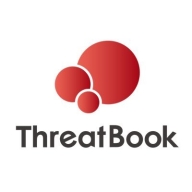

Tines and ThreatBook Threat Intelligence Platform compete in the cybersecurity automation and threat intelligence categories. Tines appears to have an upper hand in workflow automation due to its ease of setup and straightforward pricing, while ThreatBook's strength lies in its comprehensive threat intelligence capabilities.
Features: Tines offers powerful automation capabilities that integrate seamlessly with various platforms, simplifies security operations, and minimizes manual tasks. ThreatBook specializes in robust threat analysis, provides real-time threat detection, and offers comprehensive analytics tools for deep intelligence insights.
Ease of Deployment and Customer Service: Tines is known for quick deployment requiring minimal technical expertise, supported by proactive customer service. ThreatBook provides strong customer support but may need more technical resources during setup due to its complex features.
Pricing and ROI: Tines has a transparent pricing model delivering solid ROI by reducing operational overhead. Although ThreatBook is higher in cost, it offers significant returns through its advanced threat intelligence capabilities, valued for long-term benefits.

ThreatBook Threat Intelligence Platform (TIP) serves as a sophisticated cybersecurity tool that empowers users with real-time threat analysis, helping organizations anticipate and mitigate cybersecurity risks efficiently.
This platform offers comprehensive threat intelligence capabilities designed to support cybersecurity teams in quickly identifying threats and automating responses. TIP aggregates vast threat data, providing enhanced visibility into potential attacks. Its integration capabilities allow seamless connections with existing security infrastructures, improving overall defensive measures and enhancing incident response strategies.
What are the most valuable features?In industries like finance and healthcare, ThreatBook TIP supports tailored implementations, addressing sector-specific threats through targeted intelligence feeds. Its adaptable architecture ensures that users can customize the platform to meet industry-specific challenges effectively, resulting in improved risk management and strategic threat handling.
Tines automates manual security tasks, incident response workflows, and tool orchestration, enhancing efficiency by reducing repetitive processes and improving response times.
Users leverage Tines to automate complex security and incident response operations, integrating seamlessly with other platforms to streamline tasks. Its no-code automation capabilities and strong security features are particularly valued. While it enhances operational efficiency, users suggest improvements in customer support, documentation, and additional integration capabilities to overcome learning curve challenges. Some mention occasional latency issues and seek more customization, training resources, and clearer pricing structures. Enhanced scalability and detailed error logs are desired for smoother troubleshooting.
What are Tines' most important features?
What benefits and ROI should users look for?
In specific industries, Tines is implemented to automate security operations in sectors like finance, healthcare, and technology, where rapid incident response and integration with other platforms are crucial. Automating complex workflows without code is particularly beneficial in these fast-paced environments.
We monitor all Threat Intelligence Platforms reviews to prevent fraudulent reviews and keep review quality high. We do not post reviews by company employees or direct competitors. We validate each review for authenticity via cross-reference with LinkedIn, and personal follow-up with the reviewer when necessary.